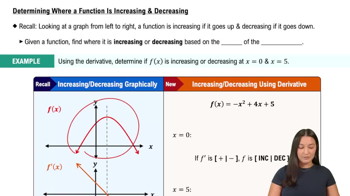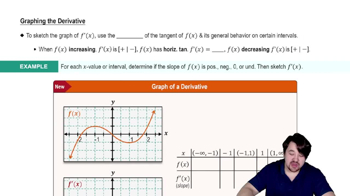In Exercises 5–8, determine whether the graph of the function is symmetric about the 𝔂-axis, the origin, or neither.
𝔂 = x² - 2x - 1
 Verified step by step guidance
Verified step by step guidance Verified video answer for a similar problem:
Verified video answer for a similar problem:



 6:21m
6:21mMaster Properties of Functions with a bite sized video explanation from Patrick
Start learning